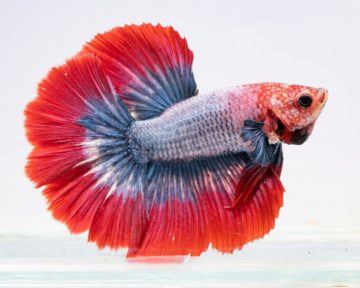Annie Roth in The New York Times:
 For centuries, humans have been captivated by the beauty of the betta. Their slender bodies and oversized fins, which hang like bolts of silk, come in a variety of vibrant colors seldom seen in nature. However, bettas, also known as the Siamese fighting fish, did not become living works of art on their own. The betta’s elaborate colors and long, flowing fins are the product of a millennium of careful selective breeding. Or as Yi-Kai Tea, a doctoral candidate at the University of Sydney who studies the evolution and speciation of fishes, put it, “quite literally the fish equivalent of dog domestication.”
For centuries, humans have been captivated by the beauty of the betta. Their slender bodies and oversized fins, which hang like bolts of silk, come in a variety of vibrant colors seldom seen in nature. However, bettas, also known as the Siamese fighting fish, did not become living works of art on their own. The betta’s elaborate colors and long, flowing fins are the product of a millennium of careful selective breeding. Or as Yi-Kai Tea, a doctoral candidate at the University of Sydney who studies the evolution and speciation of fishes, put it, “quite literally the fish equivalent of dog domestication.”
A new study, uploaded in April to the preprint service BioRxiv, shows through genome sequencing that humans began domesticating bettas at least 1,000 years ago. The millennium of careful selection gave rise to the stunning diversity of domestic betta fishes alive today, but also caused both wild and domestic betta fish to undergo vast genetic changes. By studying the genes of these fish, the study’s authors argue, scientists can learn a great deal about how domestication alters the genes of wild animals.
Mr. Tea, who was not involved in the analysis, praised the research for being “the first major study to tease apart the genetic basis for this remarkable phenomenon” in fish, he said.
More here.
